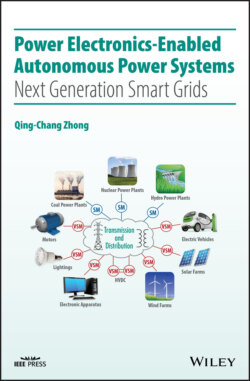Читать книгу Power Electronics-Enabled Autonomous Power Systems - Qing-Chang Zhong - Страница 22
1.4 Summary
ОглавлениеIn this chapter, the motivation and purpose of this book are briefly presented before describing the structure and contents of the book. Then, the evolution of power systems is outlined, highlighting the prominent features of next‐generation smart grids with comparison to today's grids and the current‐generation smart grids. The next‐generation smart grid has three prominent features: (1) the role of ICT is defined to be unidirectional for monitoring and management only, excluding control, in order to prevent cyber‐attacks and single point of failures; (2) all active players are unified with the same rule of law, which is backward compatible with today's grid, in order to achieve autonomous operation without relying on ICT and to prevent wide‐area blackouts; and (3) it is governed by a harmonious system architecture that allows the grid to expand as well as to decompose when needed, e.g., in the case of faults to prevent local faults from cascading into wide‐area blackouts.
Parts I–V will present the theoretical framework for next‐generation smart grids, its underpinning technical routes, and case studies in detail.
